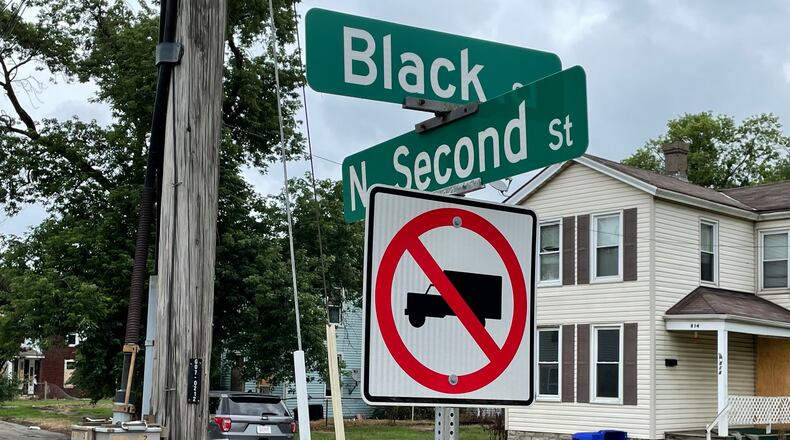“What we’re trying to do now is where trying to get to where we can harvest what we can use off the properties,” Vandor horst said.
For nearly 20 years, Hamilton has been buying these properties in the 800 and 900 blocks of North Second and North Third streets, which are just north of Black Street. Vanderhorst said these properties were initially being bought for the city’s utility department. Then Spooky Nook at Champion Mill began to develop, and he said, “We just went ahead and finished (purchasing) those since we had money from the parking revenue bonds for parking right there.”
According to the Butler County Auditor’s website, the city owns more than four dozen properties on these two streets.
Some of the properties have already been razed, but one of the next buildings expected to come down is the former Speedy’s Drive-Thru at the corner of North Second and Black streets, across from the Cohen recycling plant.
Once the parking lot is in place, the land will be transferred to the Hamilton Community Authority, an economic development tool for the city. The parking revenues generated by the parking lot will go to retire the debt issued for the Spooky Nook parking improvements.
Vanderhorst said the level of revenue generated from the parking is unknown but added, “it’s just an additional piece of the capital stack for the future.” When the parking debt is paid off, some of the revenue will go toward the upkeep of the lots.
Hamilton Community Authority board vice president Dan Bates said parking is “critically important” for the anticipated crowds coming to Spooky Nook, which officials had said, based on crowds at the original Pennsylvania location, Hamilton could attract more than 1 million visitors a year in its first year.
Bates also said the parking is important for downtown businesses just blocks away from the multi-sport and event complex.
“In Pennsylvania, there’s no place to walk to,” said Bates, who is also the Hamilton Greater Chamber of Commerce president and CEO. “They may not be there all day (in Pennsylvania) because there’s no place to walk to. It’s different in Hamilton.”
Bates said they anticipate people, especially those driving multiple hours to the city, may want to leave the facility after a couple of hours. Instead of driving, it’s expected they would walk a couple of blocks to local establishments.
“You need to make sure you have ample parking,” he said. “It’s good for Hamilton, but it may be a little bit of a challenge for parking.”
Bates said there have been discussions for alternative transportation around downtown Hamilton ― such as the rentable scooters and bikes seen around downtown Cincinnati ― but “nothing to my knowledge has come to fruition.”
About the Author

